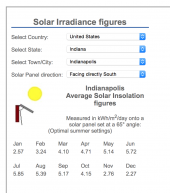Hello everyone. I am trying to figure out what I need to power my pond aeration system off-grid here in Southern Indiana. I would like this system to run 24/7.
I have a pump whose specs are 120 VAC, 60 HZ, 2.1 A, 150 Watts.
I have watched a lot of videos and read a lot, but I'm afraid I am suffering from analysis paralysis making it harder than it needs to be.
I would be interested in using LiFePO4 batteries if feasible.
Thank you all in advance for any help you can offer. I will keep reading in the mean time!
I have a pump whose specs are 120 VAC, 60 HZ, 2.1 A, 150 Watts.
I have watched a lot of videos and read a lot, but I'm afraid I am suffering from analysis paralysis making it harder than it needs to be.
I would be interested in using LiFePO4 batteries if feasible.
Thank you all in advance for any help you can offer. I will keep reading in the mean time!




